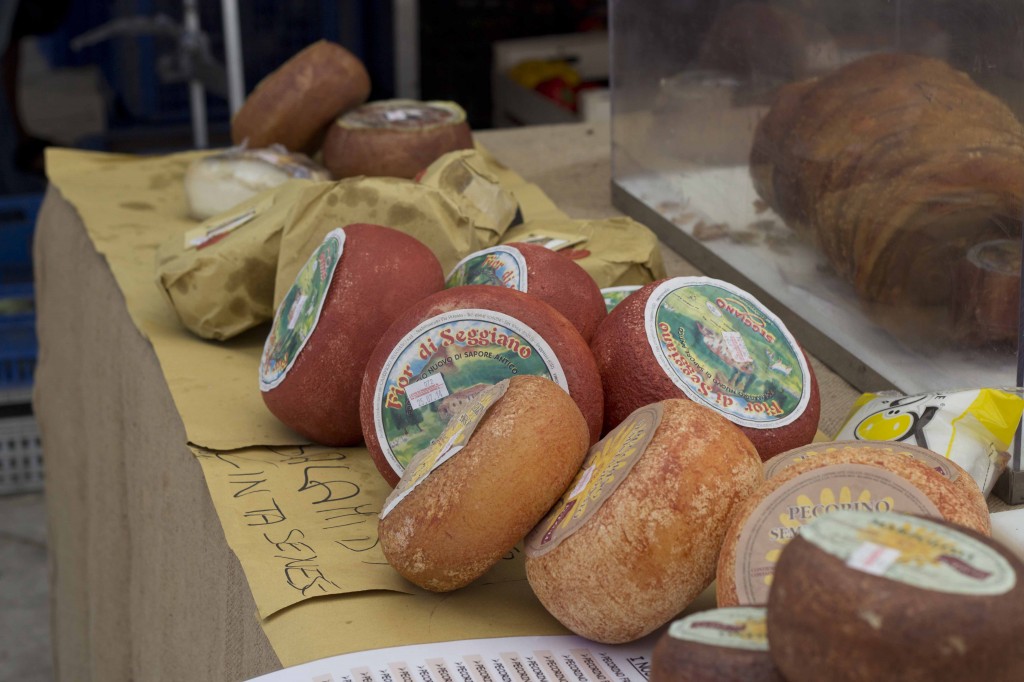
Variety of pecorino cheeses
Burrata – See Cheese: Mozzarella
Burro – See Butter
Butter (Burro / Manteca)
Equivalents: 1 cup butter = 230 grams
1 “uovo” (egg) of butter = 30-40 grams
1 “noce” (nut) of butter = 20 grams
Butter is the fat which separates out when churning or centrifuging the cream of a cow. It is more frequently used in the north than in the rest of Italy. Butter contains vitamins A and D but also contains high levels of cholesterol so should be eaten in small amounts.
Buy: Butter comes salted or unsalted. Unsalted is generally preferable as it must be sold as fresh as possible without the salt to help preserve it. Salt also masks the flavour of butter which has begun to sour and lowers the temperature at which butter begins to burn. In Italy butter is required to have a minimum of 82% fat content. Make sure when you purchase the butter that it is solid, smooth, and there are no signs that the butter has melted and then solidified. There should be no visible moisture. It should be evenly light yellow in colour. The best butter should be sweet and delicate in flavour, similar to cream.
Store: Butter should be stored in the refrigerator in a sealed container as foods with strong odours will transfer their flavour to the butter. Follow the expiration date on the packaging. It can also be frozen to preserve it longer.
Prepare: Butter can be used raw for eating or dressing food, room temperature for baking, melted for baking and dressing food, or used to fry or sauté. Butter melts at 28 to 33˚C and burns at 130˚C (unless the fat solids are separated out, called “clarified butter”, in which case it has a smoking point of 250˚C).
Eat: Butter is eaten raw, spread on bread and used to dress risotto, pasta, and boiled vegetables. It is melted and served with boiled fish, seafood, and vegetables. Browned butter is used to dress pan-fried meat, cutlets, and some fish. Butter can be mixed with oil when cooking to benefit from the flavour of the butter while the oil prevents the butter from burning.
Caprino cheese – See Cheese: Caprino
Cheese (Formaggio)
- GOAT CHEESE
- GRANA PADANO
- MASCARPONE
- MOZARELLA
- PARMIGIANO-REGGIANO/PARMESAN
- PECORINO
- RAVIGGIOLO/GIUNCATA/FELICIATA
- RICOTTA
- SQUACQUARONE
- STRACCHINO
- CAPRINO
There are hundreds of cheeses in Italy. Cheese has been produced in Italy since ancient times and from the 5th Century, Sicilia has been well-known for its cheeses.
Buy: Cheeses come in all different types. Some cheeses, particularly soft, creamy cheeses, have mouldy rinds which are part of the cheese’s intended character. Additionally, some cheeses are purposefully veined with mould such as blue cheeses like Gorgonzola and Castelmagno. Note that fresh cheeses such as Mozzarella, Mascarpone, and Ricotta are technically categorised as a “latticino” rather than a real cheese although I have included them here. Here is a list of the typical variations in cheeses. Each cheese will be unique in terms of which characteristics it has. The Slow Food guide to Italian Cheeses divides the categories up as follows:
Milk: cow (vacchino), ewe (pecorino), goat (caprino), buffalo (bufalino), or mixed (latte misto)
Fat content: fat (42% or above), semi-fat (20-42%), or low-fat (20% or below)
Water content: hard (less than 40% water), semi-hard (40-45% water), or soft (45-60% water)
Cheese-making technology: uncooked (curd cut but not cooked), semi-cooked (curd cut and cooked at less than 48˚C), cooked (curd cut and cooked at 48 to 56˚C), stretched curd (curd ripens in acid whey for a few hours and stretched by hand), pressed curd (pressure placed on cheese for 1 to 24 hours to remove whey), blue or veined (blue or green mould formed in veins either naturally or having been introduced), bloomy rind (white microflora induced mould forms on the rind), and washed rind (outer rind washed with brine or water and alcohol, particularly used for soft cheeses).
Maturing period: fresh (to be consumed immediately), briefly matured (matured for up to one month), medium matured (matured for 1 to 6 months), and slowly matured (matured for more than 6 months)
Store: Cheese will continue to mature after you take it home. Fresh cheeses should be eaten as soon as purchased as they were not meant to mature and will spoil. Cheese should be wrapped individually in parchment paper and then in tin foil so that the cheese can breathe and placed in the drawer of the refrigerator. Do not commingle cheeses in the same packaging or they will affect the flavour of each other and will transfer mould.
Prepare: Remove the cheese half an hour before serving, unwrap it and allow it to breathe before serving. If hard cheeses develop mould, you can simply cut the mould off and continue using. If fresh cheeses such as Mascarpone develop mould, they should be discarded. For Ricotta, check the Ricotta section below.
Eat: In creating a cheese platter, it is best to not buy fresh cheeses or flavoured cheeses unless it is a particularly special cheese. Normally there are an odd number of cheeses, typically 5 different kinds and should include a mix of hard and soft and have about 2 ewe’s milk cheeses, 1 goat’s milk cheese, and 2 cow’s milk cheeses (including one blue cheese such as Gorgonzola). They are normally placed from the mildest flavoured cheese to the strongest flavoured cheese (this would be the blue cheese). Cut the cheese cut into wedges or rectangular blocks. For hard cheeses, remove the rind on the top and bottom starting from the centre of the cheese and cutting down to the end. The cheese board can be accompanied by honey, grape must, walnuts, pear, or grapes. Each cheese should ideally have its own knife so that they flavours are not intermixed.
Types:
Burrata – See Mozzarella
Goat Cheese (Caprino)
Caprino is a cheese which is made in whole or in part with goat’s milk but can also mean a fresh cheese which is cylindrical in shape. Caprino made entirely with goat’s milk are made in the Valle d’Aosta, Piemonte (Cuneo), Lombardia (Barzio, Introbio, and Valsassina), Liguria (Valle dell’Arroscia), and Sardegna. Caprino made with mixed cow and goat milk is made in Abruzzo (around Rivisondoli) and Calabria.
Buy: Caprino can be sold fresh or mature and can be firm or soft. It can be stored in aromatised oil with garlic, bay leaf, and / or chilli.
Notable types:
Caprino a latte crudo from Sardegna (firm, goat’s milk)
Caprino dell’Aspromonte from Calabria (firm, goat’s milk)
Caprino della Limina from Calabria (firm, goat’s milk)
Caprino della Valbrevenna from Liguria (soft, goat’s milk)
Caprino de Cavalese from Trentino Alto Adige (firm, goat’s and cow’s milk)
Caprino di Montefalcone del Sannio from Molise (soft, goat’s milk)
Caprino di Rimella from Piemonte (soft, goat’s and cow’s milk)
Caprino ossolano from Piemonte (soft, firm, goat’s milk)
Caprino stagionato from Lombardia (compact, goat’s and ewe’s milk)
Prepare: If the cheese was sold with a mouldy white or grey rind, then is fine to keep attached.
Eat: Caprino can be eaten with oil and pepper or with herbs. It can be eaten as a table cheese or used in recipes.
Felciata – See Raviggiolo
Giuncata – See Raviggiolo
Grana Padano PDO (Grana Padano DOP)
Substitute: parmigiano-reggiano, gransardo
Grana Padano is from Lombardia and has a designated origin, produced in 27 provinces along the Po Valley. It is produced in Lombardia, Emilia-Romagna, Piemonte, Trentino, and Veneto regions. This is another type of Parmigiano-Reggiano, also a hard cow’s milk cheese, but it is not held as highly in esteem.
Buy: The hard, thick, smooth dark yellow or gold coloured rind of the cheese should have the mark “Grana Padano” with the date of production and the number of the dairy imprinted on it. Grana Padano from Trento may have a further designation of “Trentingrana” imprinted on it. The cheese should be dry, hard, finely granular and have a golden yellow colour to it. It should break up in flakes when cut. It is made of partially-skimmed raw cow’s milk cheese. The cheese can be matured over 12 to 36 months.
Prepare: Remove the cheese half an hour before serving, unwrap it and allow it to breathe before serving. If there are any mouldy parts, cut them off and discard. Use the rest of the cheese as normal.
Eat: It is not used in cooking but used as a table cheese to eat as is or as a topping for pastas and risottos.
Mascarpone (Mascarpone / Mascherpone)
Substitute: Philadelphia cream cheese
A type of fresh cow’s milk cream cheese from Lombardia which is not strictly considered a cheese but a latticino. It is in some ways more similar to butter or Ricotta.
Buy: Mascarpone should have a delicate flavour, extremely dense and creamy texture, and should be pure white. The fat content varies from 20 to 45% but ideally purchase Mascarpone at the top end of this range. It has a mild, creamy flavour which can become slightly sour after a few days.
Store: Store in the refrigerator and use by the indicated date on the package. Mascarpone can be stored for 20 to 30 days after production.
Prepare: None needed but if you need to whip it for a pudding, it is more pliable if removed from the refrigerator an hour beforehand. If the cheese has moulded then discard it.
Eat: Mascarpone is used in many desserts, most famously in tiramisù. It pairs well with fruit and sugar. It is also used in savoury preparations in Lombardy such as with pasta or can be layered with Gorgonzola dolce cheese and garnished with nuts. It can also be eaten on its own sprinkled with sugar and cocoa.
Mozzarella Type Cheese (Mozzarella / Mozzarella di bufala / Fior di latte / Burrata)
Strictly speaking, the word “mozzarella” means curd cheese made from buffalo milk (sometimes referred to as Mozzarella di bufala). Most places around the world, the word “mozzarella” refers to Fior di latte, a curd cheese made from cow’s milk. They are similar in texture although buffallo milk mozzarella is creamier and softer with a more intense flavour. Mozzarella has been produced in Campania since the 13th century. The name “mozzarella” comes from the verb “mozzare” which means “to cut” referring to the cheese-making process it undergoes when the curd is cut to the desired size.
Buy: Mozzarella can be formed in to tiny or large balls, ovals, or braids. The weight of each individual Mozzarella can range from 30 to 600 grams. The outside should be smooth and shiny with a thin skin and the colour of white porcelain. The fat content should be a minimum of 50% and it should be mildly stretchy. Good Mozzarella is typically sold in liquid to maintain its freshness. The taste should be mildly salty and when cut open, cream should come out from the cheese. There are also smoked Mozzarellas which have been smoked in straw, wood, or leaves.
Notable types:
Caciotta di bufala di Amaseno from Lazio (firm, buffalo’s milk, complex and pungent)
Bocconcini di bufala alla panna from Campania (soft, elastic, cow’s and buffalo’s milk)
Burrata from Puglia (soft, creamy, cow’s milk shaped in a bag filled with cream and soft curd)
Fior di latte from Campania (soft, elastic, cow’s milk)
Fior di latte di Agerola from Campania (soft, elastic, cow’s milk cheese shaped in plaits)
Mozzarella di Bufala Campana DOP from Campania (soft, springy, buffalo’s milk)
Mozzarella nella mortella from Campania (fresh, firm, cow’s milk wrapped in myrtle leaves)
Store: Store covered in its own liquid in the refrigerator for up to 48 hours but ideally use as soon as possible.
Prepare: If the cheese has moulded, then discard it. Normally you can just remove the mozzarella for the liquid and tear it by hand to use in dishes. For dishes such as pizza, calzone, and aubergine Parmesan you may want to strain the Mozzarella after breaking it up to remove excess liquid. If eaten raw, it is best enjoyed at 15 to 18˚C.
Eat: Mozzarella pairs well with tomatoes, herbs, olives, peppers, and olive oil. Mozzarella can be eaten raw in salads such as caprese or cooked in dishes such as mozzarella in carrozza, mozzarella impanata, pizza, calzone, and parmigiana di melanzane.
Parmigiano-Reggiano PDO / Parmesan (Parmigiano-Reggiano DOP)
Substitute: Grana Padano, Gransardo
Parmesan is a term used around the world for cheese in the style of Parmigiano-Reggiano. Parmigiano-Reggiano is from Emilia-Romagna and Lombardia. It is made from whole and partially-skimmed cow’s milk cheese and is one of the most famous cheeses in the world. It has a protected origin and can only be produced in the provinces of Parma, Reggio Emilia, Modena, the left bank of the river Reno in the province of Bologna, and the right bank of the river Po in the province of Mantua. To see how Parmigiano-Reggiano cheese is made click here. Parmigiano-Reggiano has one of the highest quantities of calcium of any food and is often eaten by nursing mothers and children in Italy. It is also a good source of protein, potassium, magnesium, zinc, and vitamins A and B.
Buy: Parmigiano-Reggiano is a golden yellow coloured cow’s milk cheese which should be hard and finely granular in texture. It is often sold grated which is generally vastly inferior as the flavour dissipates over time. When cut, it should flake. The rind should be 6 m thick, slightly oily, straw yellow in colour and be stamped with “Parmigiano Reggiano”, the producer’s registration number, and the date of production. Parmigiano-Reggiano comes in three maturities:
Parmigiano Reggiano Fresco (Young Parmesan)
This has been aged for 12 to 18 months.
Parmigiano Reggiano Vecchio (Medium Aged Parmesan)
This has been aged from 18 to 24 months.
Parmigiano Reggiano Stravecchio
This has been aged from 24 to 36 months. Parmigiano-Reggiano can be successfully aged for several years.
Prepare: Remove the cheese half an hour before serving, unwrap it and allow it to breathe before serving. If you are grating it, cut off the rind and reserve in the freezer to add depth of flavour to soups. If the cheese has moulded, cut off the mouldy parts and discard them. Use the rest of the cheese as normal. Parmigiano-Reggiano can be shaved, grated, or broken into chunks.
Eat: Parmigiano-Reggiano can be eaten on its own but is often used to dress pasta, grains, risotto, and soups (unless fish or seafood is added). It is also cooked with vegetables and meat.
Pecorino
Substitutions: Parmigiano-Reggiano or Grana Padano
Buy: Pecorino is an ewe’s milk cheese (pecorino means small sheep) produced in Veneto, Liguria, Emilia Romagna, Toscana, Umbria, Abruzzo, Lazio, Campania, le Marche, Basilicata, Calabria, Sicilia, and Sardegna. Pecorino is a firm, dry, granular cheese which is white or straw yellow in colour and flakes easily. It has a sharp flavour. There are many types of pecorino but the ones most commonly found abroad are pecorino romano and pecorino sardo. It has a dry crumbly texture and is more often used in southern Italy in place of Parmigiano-Reggiano (Parmesan) or Grana Padano. The flavour varies from mild to quite peppery and you can buy pecorino with black peppercorns inside. Some people do not like the flavour of pecorino so substitute Parmigiano-Reggiano or Grana Padano instead.
Pecorino can be sold fresh (with a soft and elastic texture), primosale (salted with a medium firm texture), mature (firm and grainy in texture), or smoked. The fresh and salted versions tend to be eaten as a table cheese.
Prepare: Remove the cheese half an hour before serving, unwrap it and allow it to breathe before serving. If the cheese has become mouldy, cut off the mouldy parts and discard them. Use the rest of the cheese as normal.
Eat: Pecorino can be served young as a table cheese, particularly accompanying raw broad beans and sausages. Mature pecorino can be used to dress pasta dishes or used for cooking in recipes. Certain recipes call for pecorino such as pasta all’amatriciana, pasta alla carbonara, pasta con ragù di castrato, and orecchiette pugliese con lardo e vedura)
Notable types:
Pecorino Romano PDO (Pecorino Romano DOP)
Substitute: pecorino of any type
Pecorino Romano is a hard ewe’s milk cheese from Lazio, Toscana, or Sardinia. Pecorino Romano is protected in origin and can only be produced in the Agro Romano area, the province of Grosseto, and in Sardegna.
Buy: Pecorino Romano has a black plastic film on its rind, although Pecorino Romano made for domestic consumption may not have the black film. It is typically aged for 5 months for table eating and for 8 months for grating.
Pecorino Sardo PDO (Pecorino Sardo DOP)
Substitute: pecorino of any type
Pecorino Sardo is hard ewe’s milk cheese from Sardegna. The fresh and primosale versions of Pecorino Sardo are served as a table cheese, classically paired with tender, young raw broad beans.
Buy: Pecorino Sardo is made from whole ewe’s milk and can be purchased fresh (20 to 60 days maturity) or mature (aged 2 to 12 months). The mature pecorino sardo may also be smoked. Fresh Pecorino Sardo has a smooth, thin, white coloured rind with a soft, elastic, white, firm textured cheese inside. The flavour is mild and slightly acidic. Mature Pecorino Sardo has a thick, straw yellow to brown rind depending on the age. The cheese inside should be firm, grainy, hard, white to straw white in colour, and have a few holes (eyes). The flavour is slightly tangy.
Pecorino Siciliano PDO (Pecorino Siciliano DOP)
Pecorino Siciliano is an ancient Sicilian cheese enjoyed even by the ancient Greeks. It is a hard cheese made from whole raw ewe’s milk. It is produced from October to June.
Buy: Pecorino Siciliano can be eaten fresh (in which case it is called Tuma), after salting (then called Pecorino Primo Sale), semi-mature after being aged for 50 days, and mature after being aged for a minimum of 4 months (only the mature bears the DOP label). The mature cheese is used for grating. The rind is pale yellow in colour and impressed with the markings of the basket it was made in. The inside is compact, white or straw yellow colour, and has a sharp flavour. Sometimes there are black peppercorns studding the cheese. The mature Pecorino Siciliano DOP is used for cooking and is used in dishes such as gnocchetti (potato dumplings), maccheroni al sugo (macaroni with meat sauce), and bucatini alla contadina (bucatini pasta with vegetables, legumes, meat, and potatoes).
Pecorino Toscano PDO (Pecorino Toscano DOP)
Pecorino Toscano DOP is a hard ewe’s milk cheese from Toscana, Umbria, or Lazio.
Buy: Pecorino Toscano DOP can be made with pasteurised or raw ewe’s milk cheese. It is slightly sweeter in flavour than other pecorinos. The outer rind is yellow in colour and the inside is a straw yellow colour which is firm in texture. It is sold soft which has been matured for 20 days or semi-hard which has been matured a minimum of 4 months. Maturities in excess of 8 months can also be used for grating.
Raviggiolo / Giuncata / Felciata
This is a fresh cheese made from goat’s, ewe’s, cow’s, or mixed milk in Liguria, Emilia Romagna, Toscana, Umbria, Apulia, and Calabria. In Calabria there is also a smoked matured version of Giuncata which is used to grate over rice or pasta or in recipes. It is made in rush baskets or wrapped in ferns.
Buy: The cheese has a buttery texture, and has a delicate and sweet flavour which tastes like milk and hazelnuts.
Notable types:
Raviggiolo dell’Appennino Toscoromagnolo from Emilia Romagna (fresh, soft, cow’s milk)
Raviggiolo di Pecora from Toscana (fresh, soft, ewe’s milk)
Store: This cheese will only keep 4 days from production so eat immediately after purchasing or store wrapped in the refrigerator until you can eat it.
Prepare: Remove from the packaging and use. If the cheese has started to mould, then discard it.
Eat: As this cheese is very delicate, do not pair it with strongly flavoured foods. It is used in pasta dishes.
Ricotta / Séras / Puina / Giunca
Substitute: 570 grams ricotta = cottage cheese + 1 beaten egg
Ricotta is not actually a real cheese but is considered a “latticino”. It is very easy to make from good, whole milk. Please see the recipe in the Basics section in Recipes to learn how to make this at home. Ricotta means re-cooked (from recoctus in Latin) and refers to the whey left over from cheese making which is reheated to separate out the proteins which are strained out and formed into ricotta. Ricotta is used all over Italy but particularly in Piemonte, Veneto, Valle d’Aosta, Friuli Venezia Giulia, Calabria, Abruzzo, Puglia, Basilicata, and Sardegna. In Calabria there is also a ricotta which is mixed with pecorino cheese and baked, sometimes it is also smoked and salted.
Buy: Ricotta is typically a fresh cheese made from cow’s, ewe’s, or goat’s milk whey. It can also be eaten after salting or dry-salted and matured for 15 to 30 days (ricotta salata). The dry salted version may also be smoked and is then called “ricotta affumicata” and may be aged for a week to a month. The best ricotta is unsurprisingly made from the best milk and is eaten as fresh as possible. The finest ricotta is considered to be that from Piemonte and ricotta romana. It can be made very creamy or skim fat.
Notable types:
Cuincîr from Friuli Venezia Giulia (fresh, cow’s milk whey)
Ricotta affumicata di Mammola from Calabria (firm, smoked with chestnut wood and heather, goat’s milk whey)
Ricotta al Fumo di Ginepro (dry salted, smoked with juniper wood, ewe’s milk whey)
Ricotta forte/Ricotta ascquante from Puglia (fresh, goat’s and / or ewe’s and / or cow’s milk whey)
Ricotta gentile/Ricotta Romana from Sardegna (fresh, ewe’s milk whey leftover after making Pecorino Romano)
Ricotta Mustia from Sardegna (dry-salted, smoked with herbs, ewe’s milk whey)
Ricotta Romana from Lazio (fresh, ewe’s milk whey)
Scuete Fumade from Friuli Venezia Giulia (aged, smoked, cow’s milk whey, sometimes infused with herbs)
Séras/Seirass from Valle d’Aosta (fresh, cow’s, ewe’s, or goat’s milk whey, sometimes matured and smoked)
Store: Cheese will continue to mature after you take it home. Fresh ricotta should be left in its packaging in the refrigerator and eaten as soon as purchased. Matured ricotta should be wrapped individually in cling film, parchment paper, or tin foil and placed in the drawer of the refrigerator.
Prepare: Fresh ricotta is simple to make at home using only whole milk and lemons. See the recipe section under “ricotta” for details. Fresh ricotta may need to be strained before eating, depending on the recipe. Remove the mature ricotta half an hour before serving, unwrap it and allow it to breathe before serving. If the ricotta has started to mould this may or may not be an issue. If the ricotta is fresh and it was industrially produced in a sealed plastic container and it develops mould then discard it. If you buy ricotta in a basket and the top has a bit of mould, scrape away the top 1cm and taste a bit of the ricotta underneath, if it tastes sweet (it will have the characteristic flavour of the milk it was made with be it buffalo’s, ewe’s, or cow’s milk), then go ahead and use it. If it is a hard cheese, then cut off the mouldy parts and discard them, use the rest of the cheese as normal.
Eat: Ricotta pairs well with honey, cinnamon, chocolate, spinach, chard, Parmigiano-Reggiano cheese, tomatoes, and cucumbers. Fresh ricotta can be eaten on its own but is typically used in pastas, stuffed pasta (tortellini), savoury pies (torta verde and torta rustica di ricotta), fritters (ricotta fritta), calzone, polenta, and desserts such as cakes (torta di ricotta), puddings (budino di ricotta), pastries (sfogliatella), and tarts. Dry mature ricotta (ricotta salata) can be used as a table cheese, grating, or as an ingredient in pastas, salads, and desserts.
Séras – See Ricotta
Squacquarone
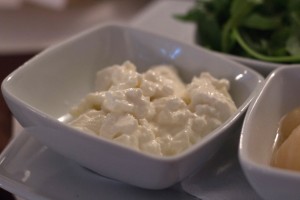
Squacquarone cheese
Substitute: stracchino
This is a fresh “latticino” from Romagna.
Buy: Squaquarone is made year-round from pasteurised cow’s milk. It has a delicate sweet flavour and creamy texture. It is fairly liquid and cream white in colour.
Store: Use immediately after purchasing. Store in the refrigerator in its packaging for a day.
Prepare: Remove from the packaging and use. If the cheese has moulded, then discard it.
Eat: Used to spread on piadina, focaccia, and flat rolls.
Stracchino
Stracchino derives its name from the word “stracca” which means “to be tired” in Lombardian dialect. The name refers either to the cows being tired from migrating during the autumn or to their milk being tired.
Buy: Stracchino is made from raw cow’s milk and can be sold fresh or briefly matured. It has a buttery texture, is white or pale yellow in colour, and has a sweet flavour.
Store: Cheese will continue to mature after you take it home. Fresh stracchino should be left in its packaging in the refrigerator and eaten as soon as purchased. Briefly matured stracchino should be wrapped individually in cling film, parchment paper, or tin foil and placed in the drawer of the refrigerator.
Prepare: Remove the cheese half an hour before serving, unwrap it and allow it to breathe before serving. If the cheese has moulded, then discard it.
Eat: Stracchino is a great table cheese but can also be used in sandwiches and in focaccia (focaccia di Recco).
Cream (Panna)
Cream is made by separating out the milk fat or butterfat from cow’s milk. Cream contains between 25 to 48% butterfat. Cream is traditionally used in the cuisine of the northern mountainous regions of Italy. Cream is not used in most parts of Italy in cooking and not typically in large quantities as it mutes the flavour of other ingredients.
Buy: Cream is sweet and delicate in flavour and is used to add creaminess or fat to a dish and can be whipped to add structure and softness. Check the butterfat content and the expiry date on the packaging of the cream. The fresher the cream the better but there are many available now which have undergone ultra-high temperature processing (UHT) which preserves the cream for a long period of time although it has a flat taste.
Types:
Single cream / Cream / Cooking cream (Panna da cucina) has 18-25% butterfat content and is used in cooking dishes.
Whipping cream, Double cream (Panna da montare) has a fat content of 30 to 48% and is typically used for desserts. Cream needs a high fat content in order to be whipped to a great volume. Fresh cream will also whip more than pasteurized cream. UHT cream whips and holds its volume better but has a bland taste.
There are also clotted creams, crème fraîches, and sour creams but these are completely different and not often used in modern Italian cooking. They cannot be used as a substitute for cream.
Store: Fresh cream can be kept in a closed container for 4 days in the refrigerator. For packaged cream, use the expiration date on the packaging to determine how long the cream may be kept. It needs to be kept in a cold part of the refrigerator, ideally about 4˚C.
Prepare: Cream needs no specific preparation, just keep it cold until it is to be used. To make whipping cream (panna montata), the bowl, the cream, and the whisk need to be cold and then it is whipped until the cream forms soft peaks. Soft peaks are achieved when you remove your whisk from the cream and it forms a peak where the tip of the peak folds over (rather than stays straight up). Be careful not to over whip the cream or it will turn into butter. You can add sugar and vanilla to the cream if you like and the sugar will help keep the whipped cream light and not separate as easily.
Eat: Whipping cream can be whipped to soft peaks, sweetened, or flavoured and served as an accompaniment to a dessert or added as an ingredient to pastas (tagliatelle con panna), puddings (panna cotta, lattemiele, and zuppa inglese), sauces, gelato, cakes, custards (crema di Cogne, fiocca, crema del Lario, and cavollat), and pastries (bongo / profiteroles).
Egg (Uovo)
Equivalent: 1 egg = 1/3 yolk + 2/3 white (by weight) and 4 extra-large (XL) eggs = 5 large (L) eggs = 6 medium (M) eggs = 7 small (S) eggs
1 XL egg> 73 gms, 1 L egg=63-73 gms, 1 M egg= 53-63 gms, 1 S egg < 53 gms
Eggs are an important ingredient in Italian cooking and baking. Generally chicken eggs are used in Italian cooking. Some chicken eggs in Italy have red coloured yolks (this is a result of the feed). These are the best for making tiramisù. Egg whites can whip up to 5 times their volume so are useful for adding air to a dish. The yolk is useful for creating an emulsion or as a thickening agent. In baking, eggs are used as emulsifiers and leavening agents which also add stability and structure to a dish. Eggs are a complete protein and contain Vitamins A, B, and D, phosphorous, and riboflavin. They are easily digestible so are given to children who are not allergic.
Buy: Select fresh large or extra-large free-range eggs (check the expiration date on the packaging and open the box to ensure none of the eggs are broken or cracked).
Selection criteria:
Colour: Generally, eggs come in brown or white (the breed of the chicken determines the colour of the shell) but there are also pale blue and green coloured eggs. All the colours are interchangeable.
Size: Eggs come in a variety of sizes and getting the size correct is essential for baking where the ratio of ingredients needs to remain constant to achieve good results. Generally, large (63- 73 grams) and extra-large (73 grams or more) eggs should always be used. Medium eggs weigh between 53 to 63 grams while small eggs weigh less than 53 grams.
Freshness: Very fresh eggs are best, in order of freshness, for sauces, poaching, frying, boiling, and in any dish where the egg will not be thoroughly cooked whereas older eggs are best for baking. Fresh eggs have thick egg whites and the yolks are more difficult to break. Very fresh eggs can be difficult to peel. To determine the freshness of an egg, place the egg horizontally in cold water and if it stays horizontal it is fresh. If it is slightly older it will tilt, if it is more than 3 weeks old it will float, and even older it will sit vertically. This is because the air sac inside the egg gets larger over time. You can also hold the egg up to the light to see how large the air sac is. For the egg to be considered fresh, the air sac should be thinner than 6 mm.
Labelling: Free-range indicates that the chicken was allowed to roam and was not locked into a cage for its lifetime. This generally means the chicken was probably healthier and in need of less hormones to encourage egg laying and antibiotics to ensure the chicken was disease-free in a crowded environment. There is also a concern that there is an increased chance of E. coli bacteria in battery hens due to the crowded environment. There is however less control over what the free-range hens are eating than in battery hens. Organic means that the feed that the chickens ate was organic, which means fewer pesticides, and should guarantee that there are no antibiotics used. The nutritional content for all eggs should be the same however. I prefer feeding my family products with fewer hormones and antibiotics so I buy organic.
Store: Eggs should be kept in their cartons in the refrigerator at 2-3˚C with the rounded end up until the expiration date marked on the packaging, about 35 days after production. Egg shells are porous so store the eggs carefully so they do not absorb unwanted flavours. For example, truffles are sometimes stored with eggs so that the egg will absorb the aroma of the truffles.
To store extra yolks, place the yolks in a container cover with a bit of water so the yolk has no exposure to the air, seal the container from the air and keep in the refrigerator for up to 2 days. To store extra egg whites, place in an air-tight container and keep in the refrigerator for up to 4 days or in the freezer for up to a year. Hard-boiled eggs can be kept in the refrigerator for up to a week.
Prepare: Eggs carry salmonella not only inside the egg but on the shell so be sure to clean the outside of the shell if it is dirty and always wash your hands and equipment which has touched the egg or egg shell with soap and water. Because of this, raw eggs are not recommended for people with weak or impaired immune systems such as people who are ill, children, elderly, and pregnant women. Once you wash the shell of an egg, you need to use it as soon as possible as washing removes the natural protective film on the shell which prevents micro-organisms from permeating the shell. Flecks of blood in the egg are not harmful, just remove with a spoon and discard.
If you are using very fresh eggs for hard-boiling and peeling, you can place the freshly cooked egg, while hot, into ice water to separate the egg from the shell.
To separate raw eggs, see the How-to guide here.
For baking, boiling, whipping egg whites, or using an egg yolk for emulsifying, the eggs should be brought to room temperature before use by removing the eggs from the refrigerator 1.5 hours before use. To quickly bring the eggs to room temperature, pour hot tap water over the cold eggs and allow to sit for 5 minutes. To whip egg whites, see the How-to guide here. To temper egg yolks, see the How-to guide here.
Eat: Eggs are used in making pasta (pasta fresca), binding stuffings and fillings, egg yolks emulsify sauces, omelettes (frittate), whipped whites add airiness to dishes (semifreddo and sformato), breading and deep-frying (costolette and arancini), brushing pastry, cakes, biscuits, custards (crema pasticcera and gelato), soups (stracciatella and zuppa alla pavese), and sauces. Egg yolks add moisture, tenderise, and enrich cakes and pastries. Eggs can be served on their own, stuffed (uova ripiene), fried (uova al tegamino / uova al burro and uova alla provatura), poached (uovo in camicia or uova in purgatorio), soft-boiled, hard-boiled, coddled, scrambled (imbrogliata d’uovo alla lombarda), shirred, and deep-fried (uova alla monachina). Generally eggs are cooked over gentle heat unless being fried or deep-fried.
Felciata – See Cheese: Raviggiolo / Giuncata / Felciata
Formaggio – See Cheese : Formaggio
Giunca – See Cheese: Raviggiolo / Giuncata / Felciata
Giuncata – See Cheese: Raviggiolo / Giuncata / Felciata
Grana Padano PDO (Grana Padano DOP) – See Cheese: Grana Padano
Lard (Strutto / Sugna)
Lard is a traditional fat used in cooking all over Italy, although is becoming less used due to health consciousness. Not to be confused with lardo, lard is the soft fat beneath the skin, closest to the meat, whereas lardo is the hard pork fat closest to the skin from the back or back of a pig’s neck.
Buy: Lard is pork fat, which has been rendered in an oven at a low temperature or boiled with water until the water evaporates and the fat is clear. Solids which form during this process are called ciccioli or pork scratchings. The fat is cooled and the impurities sink to the bottom of the pan, and the pure fat is collected and is called lard.
Store: Store in a fully airtight container for no longer than a year . If the lard smells, looks, or tastes off then discard it.
Prepare: No special preparation required.
Eat: It is used in making breads (gnocco fritto), frying meat (pollo in padella alla romana), deep-frying, and in making preserved meats and salamis.
Mascapone – See Cheese: Mascarpone
Mascarpone cheese – See Cheese: Mascarpone
Mascherpone – See Cheese: Mascarpone
Milk (Latte)
Milk can come from any mammal but the word milk tends to refer to cow’s milk. Ewe’s and goat’s milk are also consumed though. The best milk by far is milk from cows reared on the Alps. It is the creamiest most satisfying milk one could enjoy. Milk is rich in vitamin D and calcium. Calcium is essential for the functioning of the heart, muscles, and nerves and the formation of bones and teeth. Vitamin D protects the body from cancers of the stomach, oesophagus, breast, pancreas, and colon. It also contains protein, phosphorus, potassium, and magnesium. The lactose in the milk, which some people find difficult to digest, promotes the establishment of the intestinal flora, which is essential for human well-being. Milk is an essential part of the diet for children under the age of 4 years old.
Buy: Most milk has been pasteurized to remove any harmful bacteria. Never buy anything labelled “milk drink” as it is not real milk. If the milk is labelled “fresh milk” it should be fresh, not reconstituted powdered milk. Milk should be a creamy white colour with a slightly sweet and a pleasant smell. Generally when cooking or baking with milk, it is best to use whole fresh milk, not UHT, reconstituted (check the label), or skim milk. UHT and reconstituted milk have a bland flavour and skim milk has a watery consistency. Really good milk is often sold in glass bottles and doesn’t travel far from where it is made.
Types:
Fresh Milk: This milk can be raw (latte crudo) which has not been treated, although it is quite rare to find this nowadays. Milk which has been pasteurized (latte pastorizzato/latte fresco) has been heated to 72-75˚C for 20 seconds in a vacuum and then is quickly cooled to remove any pathogens, thereby preserving the milk.
Whole milk (Intero) is the best type of milk you can buy and must have a fat content no less than 3.2%. True whole milk will have cream that will rise to the top and needs to be shaken back into the milk. Whole milk will be creamier in the summer when the cows have fresh grass to eat while winter milk will be paler and thinner. Some breeds of cows produce milk which is slightly blue in colour.
Homogenized milk has had the cream evenly mixed throughout. It is good for making gelato as it freezes well but it takes longer to heat.
Semi-skimmed milk (Parzialmente scremato) has undergone a centrifugal process to remove its cream. Semi-skim milk will have had half of the cream removed and has 1-1.8% fat content. It is sometimes refortified with vitamins and milk solids to make up for the nutrients removed by the process. It is good for low-fat diets but is not beneficial to small children.
Skimmed milk (Scremato) has undergone a centrifugal process to remove its cream. Skim milk will have had most of the cream removed and has 0.5% fat content. It is sometimes refortified with vitamins and milk solids to make up for the nutrients removed by the process. It is good for low-fat diets but is not beneficial to small children.
Long-life milk (Latte sterilizzato): This milk has been pasteurized, homogenized, and then sterilized to create milk which has a long shelf life and does not require refrigeration.
Ultra Heat Treated (UHT) milk (Uperizzazione) has been pasteurized and then heated to 150˚C for one second to preserve the nutrients and attempt to preserve the lactose. If the lactose caramelises, this is detrimental to the flavour of the milk. While it is inferior to fresh milk, it is helpful to have a container in the pantry if procuring fresh milk is inconvenient.
Evaporated milk (Latte concentrato / Latte evaporato) is whole or skim milk where 50-60% of the water has been removed. It is then homogenized, tinned, and sterilized at 110-115˚C. It can be used in cooking and can be whipped. Before whipping, chill the milk in the freezer until crystals form along the edges. It has a different taste to fresh milk.
Condensed milk (Latte condensato) is whole or skim milk where 50-60% of the water has been removed, it is tinned, and then sterilized. It has extra sugar so is sweet and sticky with a toffee taste. It can be used in cooking and can be whipped. Before whipping, chill in the freezer until crystals form along the edges.
Dehydrated milk / Powdered milk (Latte in polvere) is powdered milk which has a bland flavour. This process makes the milk more easily transportable and prolongs the shelf life. It is vastly inferior to fresh milk but can be used as an ingredient in yoghurt.
Store: Store fresh milk in a closed container in the refrigerator at a temperature not higher than 4˚C until the expiration date on the packaging. Long-life milk can be held at room temperature until the expiration date on the package, usually 3 months. Once opened, long-life milk must be kept in the refrigerator and will last up to 7 days. Evaporated milk can be held at room temperature unopened for years but once opened must be kept refrigerated and used within 1 day.
Prepare: If possible, try not to boil the milk as it reduces its nutritive properties, makes it more likely to scorch, and the solidified proteins and the milk skin form a skin on the top of the milk. It should be heated slowly at low temperatures to no more than a simmer. The addition of flour or sugar helps prevent skin from forming on the top of the milk. Dishes made with milk can benefit from having cling film pressed down on the top of them while cooling or before serving to prevent the skin from forming.
Eat: Italian adults typically don’t drink milk, except in coffee. Milk is an essential ingredient in making yoghurt, cheese, ricotta, mozzarella, custard (latte dolce fritto), creams, soups (minestra di castagne), gelato, puddings (budino di latte), and besciamella sauce. It is also used to boil pasta (lasagne al latte), rice (riso e latte), polenta (polenta al latte), salt cod , stockfish (baccalà alla vicentina), pork (maiale al latte), and many desserts.
Mozzarella Cheese – See Cheese: Mozzarella
Mozzarella di bufala – See Cheese: Mozzarella
Olio di olive – See Olive oil
Olio santo – See Olive oil
Oliva – See Olive oil
Olive oil (Olio di Oliva) (Olea europaea sativa)
Olive oil is the most ubiquitous cooking fat throughout Italy although historically it was mainly used in salads as it was difficult to process until the hydraulic press was invented. It is particularly prized in the center and south of Italy and along the coastline in the north. It is produced in every region in Italy except Valle d’Aosta.
The olive tree has always held a historical significance since ancient times. The Greeks believed that Athena created the olive tree and used to award the victors of the Olympic games wreathes made of olive branches. The olive branch has historically also been the symbol of peace in Christianity. Olive oil is an extremely healthy oil to cook with as it increases HDL or good blood cholesterol and so reduces the incidence of heart disease and aids the circulatory system. The Italian diet is much lauded for its benefits to one’s health because of the prevalent use of olive oil. Olive oil is also prized for its flavour.
Olives for making olive oil are harvested from November to January before they are ripe as their oil content is the highest, about 30% of their weight. Olives at this stage are low in acid and have a nice mild flavour. About 100 kilos of olives produces 20 litres of oil. Once harvested, the olives must be processed within a week, although the best oil is processed within a day or two. The olives are rinsed, crushed, and pressed using a stone, wood, or metal press without the use of heat or chemicals. The first oil extracted from the pressing is known as the “first pressing” and is marketed as “virgin olive oil”. The subsequent pressings are considered inferior due to colour (too dark), taste (too acidic or too strongly flavoured), or smell (too strong) and are blended with virgin olive oil and sold as “olive oil”. Outside of Italy virgin olive oil is sold as “extra-virgin olive oil”. Inferior oil may also be treated with centrifugal and heat treatment but is lower quality. The International Olive Oil Council presides over the quality control on the manufacturing of olive oil. The most noted varieties of olives for making olive oil include: Coratina (Puglia), Frantoio (Puglia, Toscana, Umbria), Leccino (Toscana), Taggasca (Liguria), and Lavagnina (Liguria).
Buy: When buying olive oil you need to consider what you are using it for and then select accordingly as olive oil in many places is expensive. When buying olive oil, the main considerations are: the origin of the oil, the flavour, the aroma, the colour, and the grade. Buy olive oil within 6 months of the production date.
Factors to consider:
Origin, flavour and aroma: If you can, taste the oil to determine what qualities you prefer as olive oil varies in flavour and aroma from region to region. Olive oil from Liguria and Toscana are considered the best, particularly olive oil from Lucca. Ligurian olive oil is a pale golden colour with a delicate flavour. Tuscan olive oil is greener in colour with a fruity peppery flavour. Olive oil from Puglia is also very good and has an almond flavour to it. Current legislation requires producers to indicate the place of bottling on the label but not the place of production. Fine olive oils will also state the place of production.
Colour: Generally speaking, the better the olive oil, the deeper the green colour. Oil from Liguria being the notable exception. The general rule of thumb is that the more intense the olive flavour, and the less acid the oil.
Grade: “Extra-virgin olive oil” (vergine extra / extravergine) must have low acidity (less than 1%) although can vary in colour, flavour, and aroma. There is a big range of extra-virgin olive oils and one of the main guides is price if you cannot taste the oil. Artisanally produced extra-virgin olive oil is typically sold in smaller bottles. It is more expensive and should be used in dishes which are simply prepared with delicate flavours so that its flavour stands out. Fine olive oil should also not be heated as heat will alter the oil. Look for extra-virgin olive oil labelled “cold-pressed” or “first-pressing” as it will be lower in acidity and have a greater range of flavours. There are now also olive oils with DOP and DOC protection which are unique.
There are also industrially produced extra-virgin olive oil is by the big brands (Filippo Berio, Colavita, Carapelli, etc.) which are fine for cooking with heat and cost a lot less. They have a nice flavour and good colour. I typically have a bottle of both- the fine olive oil for salads and dressing simple dishes and a bottle of Colavita for cooking with.
“Virgin olive oil” (olio d’oliva vergine) is a grade of olive oil only available in Italy and has 2% acidity. It ranges in colour from golden yellow to green.
“Olive oil” (olio d’oliva) has been further processed and blended with other oils to remove any off flavours and harmful elements. It is paler in colourful and is less flavourful than extra-virgin olive oil as a result. It can be used in other preparations, particularly if a large quantity of heated oil will be required such as in deep-frying. Many sources say deep-frying with olive oil is unwise as it cannot tolerate high frying temperatures but my Ligurian friends assure me they only deep-fry with olive oil.
Store: Olive oil should be stored in a light proof container, sealed from the air in a dry, cool place. It should be consumed between 6 months and 12 months after it was produced but can be held up to 18 months after production.
Prepare: No preparation is needed for olive oil.
Eat: Olive oil is ubiquitous in its use. It is used to dress breads (focaccia, crostini, bruschetta), dip vegetables (pinzimonio), flavour cakes and biscuits, dress salads, soups, and cooked fish, meat, and vegetables. It is also the base for cooking vegetables, meat, and fish. Olive oil can also be flavoured with chillies and used to dress pasta, pizza, salad, and vegetables (olio santo).
Parmesan Cheese (Parmigiano Reggiano) – See Cheese: Parmigiano Reggiano
Parmigiano Reggiano – See Cheese: Parmigiano Reggiano
Pecorino – See Cheese: Pecorino
Pecorino Romano cheese – See Cheese: Pecorino
Pecorino Sardo cheese – See Cheese: Pecorino
Pecorino Siciliano cheese – See Cheese: Pecorino
Pecorino Toscano cheese – See Cheese: Pecorino
Puina – See Cheese : <Ricotta
Raviggiolo Cheese – See Cheese: Raviggiolo / Giuncata / Felciata
Ricotta Cheese – See Cheese: Ricotta
Séras – See Cheese: Ricotta
Squacquarone cheese – See Cheese: Squacquarone
Stracchino cheese – See Cheese: Stracchino
Strutto – See Lard
Sugna – See Lard
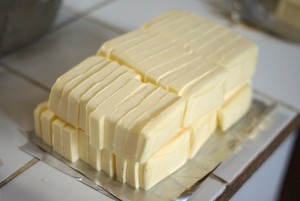


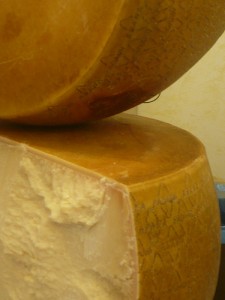
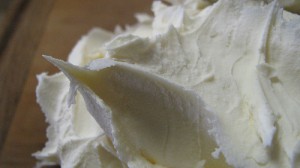



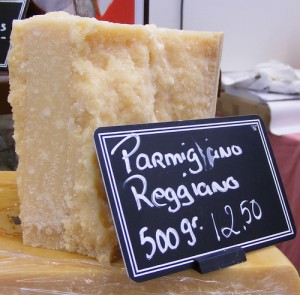
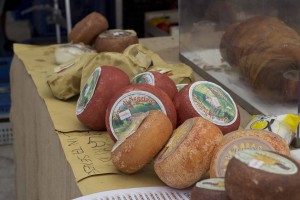

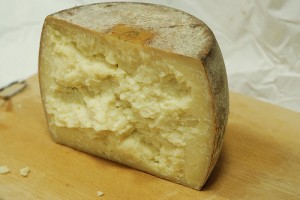

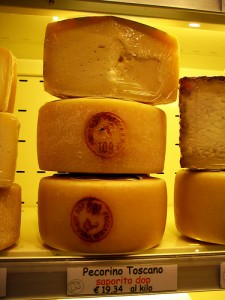
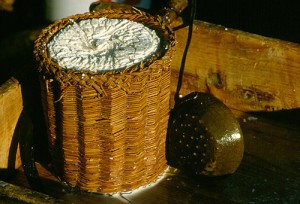
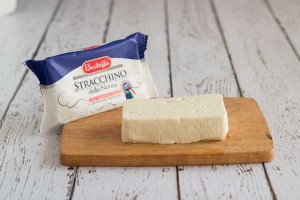
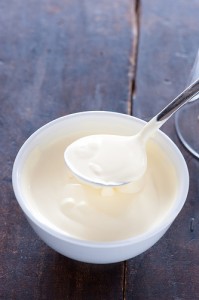
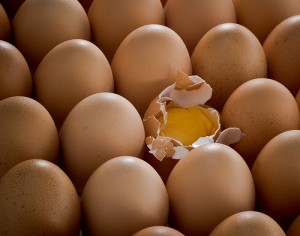
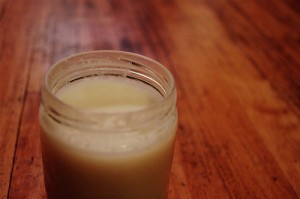

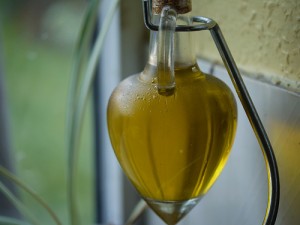
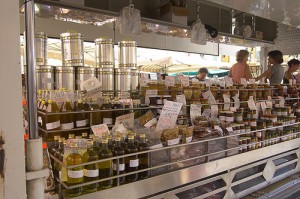

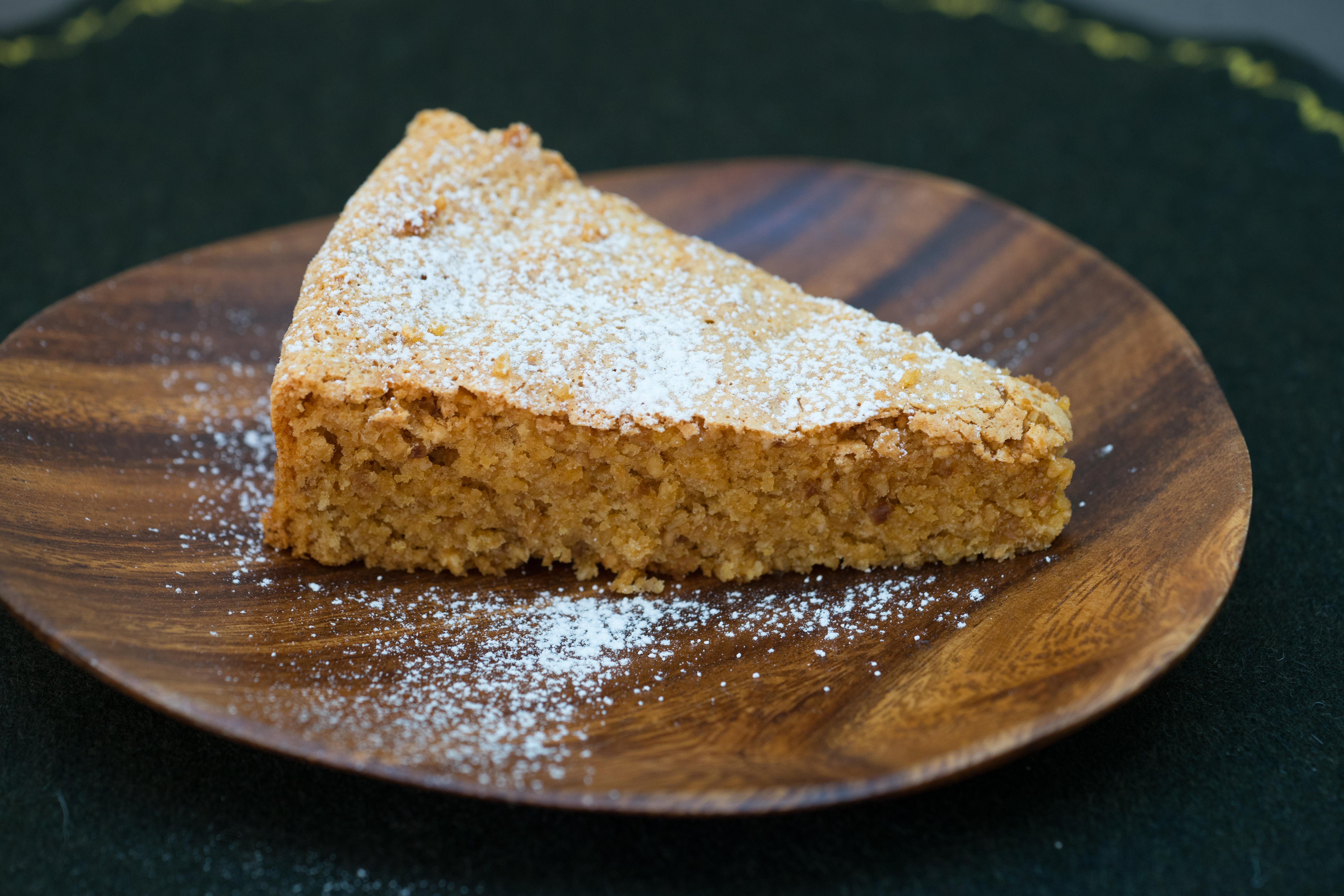
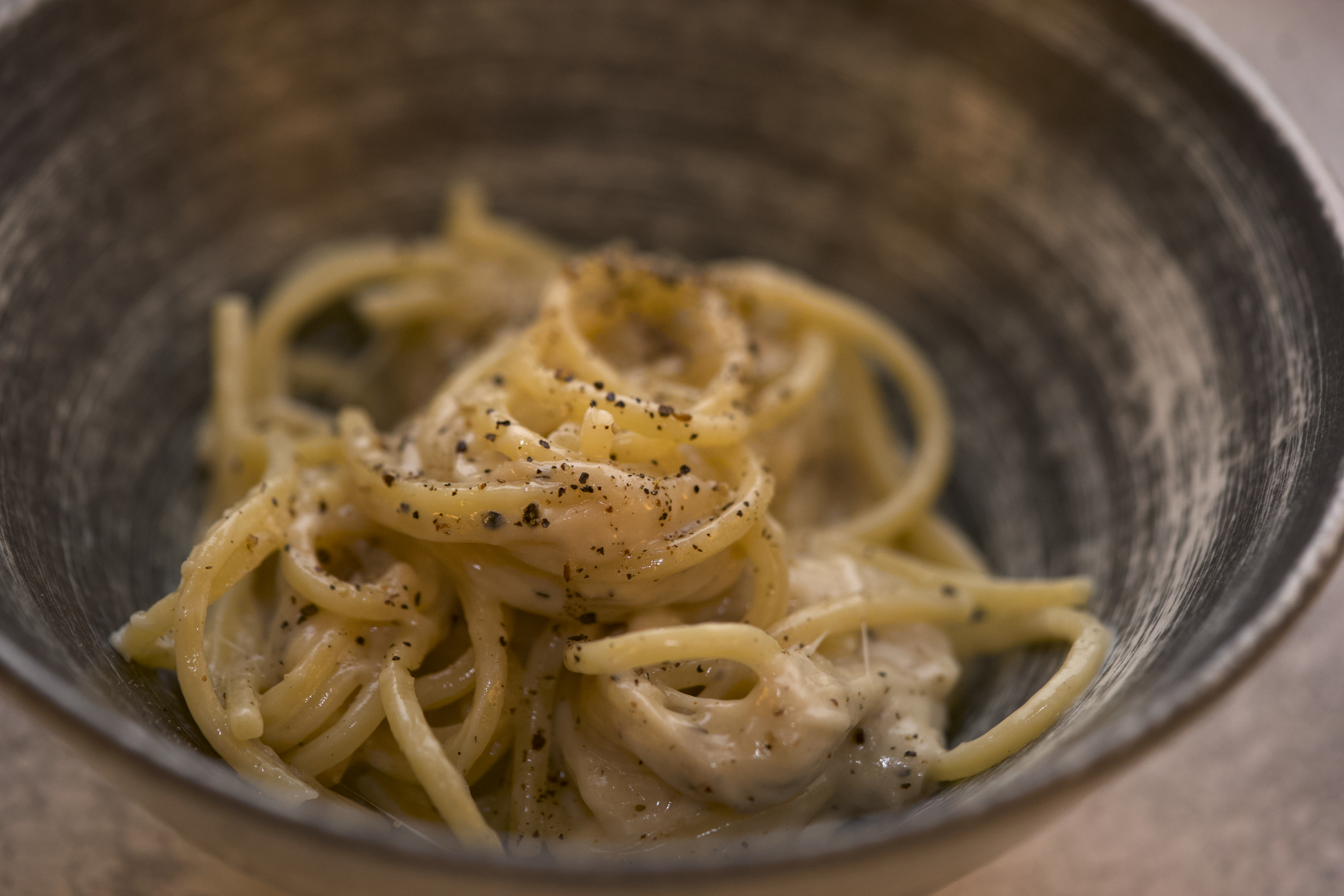
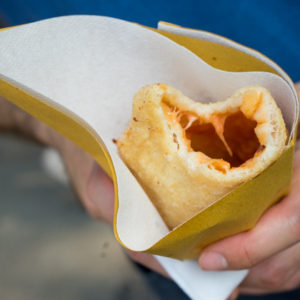
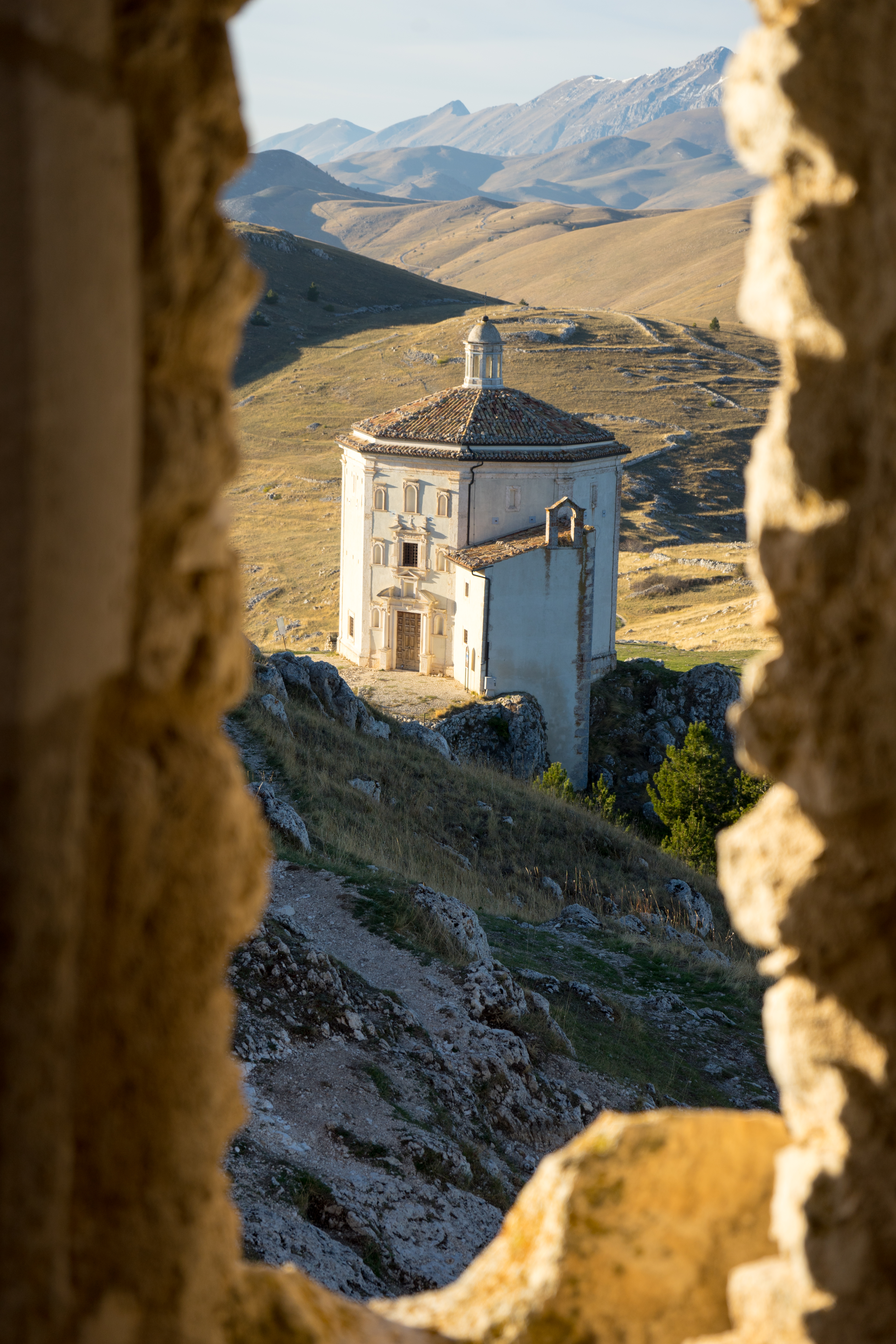
If I cannot find stracchino cheese can I replace with ricotta or another cheese that may be easier for me to find?
Hello Connie, Bizarrely enough, Philadelphia cream cheese is used or a very fresh ricotta. Also a fresh mozzarella can be used as well.